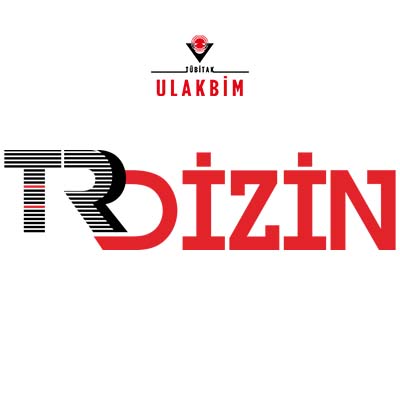Translating The Prison Culture: A Descriptive Study Upon The Culture Specific Items in The Translations Of Orhan Kemal’s 72. Koğuş
Anahtar Kelimeler:
Prison Culture- Culture Specific Items- Translation Strategies- Peter Newmark- Orhan Kemal- 72. Koğuş.Özet
It is a general fact that translation plays a fundamental role in the interaction and communication of different nations, languages and cultures. Many words and phrases have been translated because of the fact that humankind needed to communicate among themselves within the variety of languages and cultures on earth throughout history. As literature stands for one of the components constituting the language and culture, it spreads all over the world and may get into connection with a lot of foreign languages. For this reason, a translation of a work of art bears high importance in terms of its being understood by the target reader completely and its transference to the target language without any loss from its essence. In this study, two translations of ‘72. Koğuş’ by Orhan Kemal will be studied in terms of analyzing the translation of prison culture into English as the target language. The main purpose of the study is to examine the translation methods and strategies that were utilized during the process of translating the culture specific items (CSIs) related with prison and its culture in the novella, ‘72. Koğuş’ by Orhan Kemal, within the framework of Newmark’s translation procedures. As a result of this study, 14 culture-specific items about prison life that were used by the author of source text were determined and examined in their translations into English in order to detect the decisions that were taken by the translators while applying the procedures and strategies during the process of translation. After the CSIs related with prison culture are determined and analyzed via Newmark’s translation procedures, the general overview of translations will be evaluated according to Venuti’s ‘foreignization and domestication’ strategies.
Referanslar
Ayalı, Şaziye. (2012). Hapishane Romanları (1950-1980). Master Thesis, Balıkesir University, Balıkesir
Baker, Mona. (1992). In Other Words: A Course Book on Translation. London: Routledge. Büyükkol, Semih. (2017). Çeşme Kültürünün Türk Resmine Yansımaları. İdil Dergisi, 6(39),
-3256.
Davies, Eirlies E. (2003). “A Goblin or a Dirty Nose? The Treatment of Culture-Specific References in Translations of Harry Potter Book”. In The Translator, 9(1,6): 65-100.
Der Große Brockhaus. (1957), 16. Press, Wiesbaden, Germany.
Holmes, J. S., (1972). The Nature of Translation: Essays on the Theory and Practice of Literary Translation, The Hague and Paris: Mouton.
Kemal, Orhan. (1954/2015). 72. Koğuş. 29. Ed. Everest Yayınları, İstanbul.
Kemal, Orhan. (1954/1993). Ward 72. (Trans.) Nevzat Erkmen. Publications of Ministry of Culture, Ankara. ISBN: 975-17-1235-1
Kemal, Orhan. (1954/2003). The Prisoners. (Trans.) Cengiz Lugal. (Ed: Denise Mcqueen) Anatolia Publishing, İstanbul.
Kubbealtı Lugatı, Accessed 07 June 2018, http://lugatim.com/.
Larson, Mildred L. (1998). Meaning-Based Translation: A Guide to Cross-Language Equivalence 2nd ed. University Press of America, Inc.: Lanham and Maryland
Lewis, Richard. D. (2006). When Cultures Collide: Leading across Cultures, Nicolas Brealey International, Boston and London
Lindemann, Verena. (2016). Friedrich Schleiermacher’s Lecture “On the Different Methods of Translating” and the Notion of Authorship in Translation Studies. (Eds. Seruya, T. & Justo, J. M.) in New Frontiers in Translation Studies / Rereading Schleiermacher: Translation, Cognition and Culture, Springer-Verlag Berlin Heidelberg
Newmark, Peter. (1988). Textbook of Translation. Oxford: Pergamon Press. Newmark, Peter. (2004). A Textbook of Translation. Harlow: Longman.
Nord, Christiane. (1997). “Text Analysis in Translation.” In Annotated Texts for Translation: English-German. Functionalist Approaches Illustrated. Schäffner, Christina and Uwe Wiesemann. Frankfurt: Multilingual Matters, 24.
Nord, Christiane. (1997). Translating as a Purposeful Activity: Functionalist Approaches Explained. Manchester: St. Jerome.
Nida, Eugene. A. (2001). Contexts in Translating. Amsterdam/Philadelphia: John Benjamins Publishing Company.
O’Neil, Dennis. 6 June 2006. World Diversity Patterns. Accessed on 7 June 2018. http://anthro.palomar.edu/ethnicity/ethnic_5.htm
Röhrich, L. & Wolfgang M. (1977). Sprichwort. Stuttgart: Metzler
Schleiermacher, F. (1813/1992). On Different Methods of Translating. (Ed. L. Venuti, 2004), pp. 43-63.
Şaziye, Ayalı. (2012). Hapishane Romanları (1950-1980) Master Thesis. Balıkesir University, Balıkesir.
Tekalp, Selen. and Tarakçıoğlu, Aslı Özlem. (2016). Translating Popular Fiction: A Descriptive Study on the Turkish Translation of The Hunger Games. International Journal of Language and Literature, 4(2), 112-122. DOI: 10.15640/ijll.v4n2a14
TDK Türkçe Sözlük, (2011). Prepared by: Şükrü Haluk Akalın. 11. Ed. Türk Dil Kurumu, Ankara.
Toury, Gideon. (1995). Descriptive Translation Studies and Beyond. John Benjamins Publishing Co., Philadephia, PA 19118, USA.
Uslu, Arzu. (2013). Kerimcan Korcan’ın Hapishane Konulu Hikâye ve Romanlarında Hapishane Gerçeği, Master Thesis, Eskişehir Osmangazi University, Eskişehir.
Ünalan, Şükrü. (2004). Dil ve Kültür. Nobel Yayın Dağıtım, Ankara.
Venti, Lawrence. (1997). The Translator’s Invisibility: A History of Translation, Routledge, New York.
Yıldırım, Ceylan. (2015). Amin Maalouf’un Afrikalı Leo ve Semerkant Romanlarında Kültürel Unsurların Çevirisi Üzerine Bir İnceleme. The Journal of International Social Research, 8(39), 222-232.
Zare-Behtash, Esmail and Sepideh, Firoozkohi. (2010). Culture-Specific Items in Literary Translations.. Accessed 08 June 2018.
Yayınlanmış
Nasıl Atıf Yapılır
Sayı
Bölüm
Lisans
Telif Hakkı (c) 2023 Anadolu Kültürel Araştırmalar Dergisi (ANKAD)

Bu çalışma Creative Commons Attribution-NonCommercial 4.0 International License ile lisanslanmıştır.













